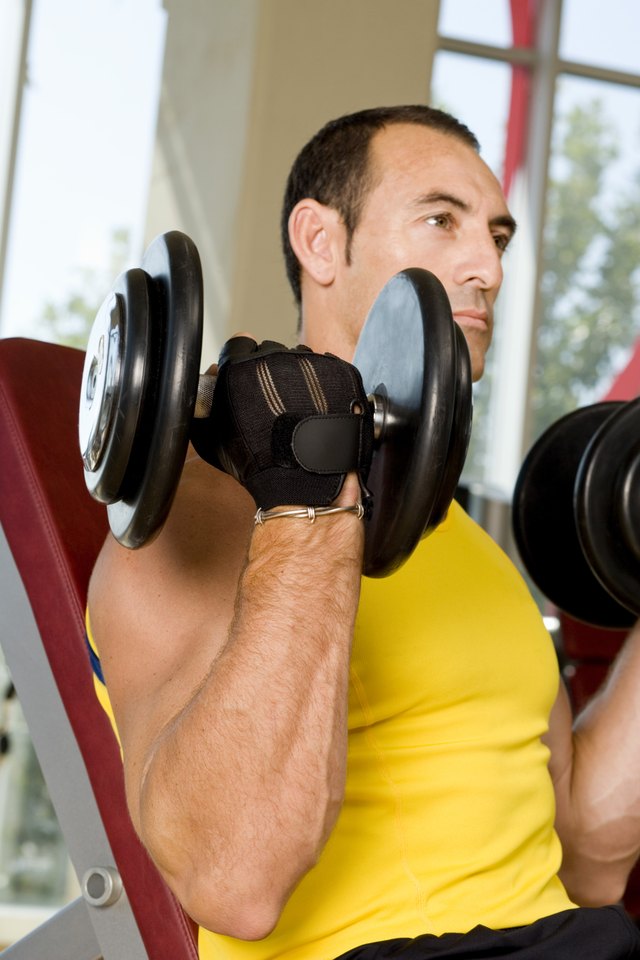Do Bicep Curls Affect Your Pecs?

Bicep curls strengthen the front portion of your arms, which makes it easier to pick up a bag of groceries and enhance your arm’s toned appearance in a tank top. While bicep curls feature several adjacent muscles that stabilize and work with the biceps, the pectoralis or pec muscles aren’t active during the exercise. If you are hoping to build your pec muscles, you may wish to try more chest-focused exercises, such as the push-up. Always speak with your physician, however, before beginning any exercise program to ensure you are not at risk for injury.
Bicep Curls Explained
A bicep curl can be performed without weights, dumbbells, a barbell or a resistance band. Start while either seated or standing with your back straight and stomach muscles tightened. Hold your hands with palms forward and your shoulders back. Inhale, then exhale and contract the front of the arm to pull your palms in toward your chest. Slowly lower the hands to your starting position and repeat 10 to 15 times. Rest for 30 seconds and perform one to two additional sets as desired.
Secondary Muscles
Several muscles work alongside your biceps to keep your arm stable as you lift and lower the weight. Your brachialis and brachioradialis muscles along the front of your arm act as synergist muscles, working with your biceps to lift the weight. The front of the shoulders, upper and middle trapezius, levator scapulae and wrist flexor muscles act as stabilizers to control the weight.
Pectoral Muscles
Your pec muscles, which are also known as your chest muscles, are located at the front of your chest. These muscles work with your shoulders to rotate them inward and outward. They also work with your shoulders for adduction, which is a type of movement that brings your arms back toward your torso. Because your shoulders are stationary during the bicep curl, this does not involve the use of your pectoral muscles.
Chest Exercises
If you wish to target the chest or pec muscles by doing weightlifting exercises, you have a wide variety of exercises from which to choose. One example is the bench press, which involves lying on your back with a barbell held over your chest, lowering the barbell toward your chest and then pushing it upward to return to your starting position. Push-ups also work the chest. To perform, start in a plank position with your body straight and your hands shoulder-width apart on the floor and feet hip-width distance apart. Bend your arms to lower your body toward the ground, stopping just before your chest touches the ground. Push against the floor to return to your starting position. The biceps act as stabilizer muscles for both exercises, according to ExRx.
References
Writer Bio
Rachel Nall began writing in 2003. She is a former managing editor for custom health publications, including physician journals. She has written for The Associated Press and "Jezebel," "Charleston," "Chatter" and "Reach" magazines. Nall is currently pursuing her Bachelor of Science in Nursing at the University of Tennessee.
